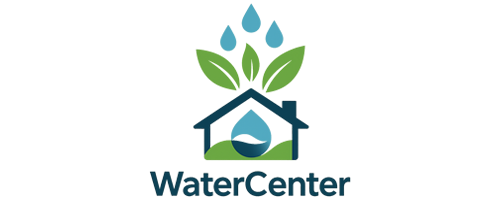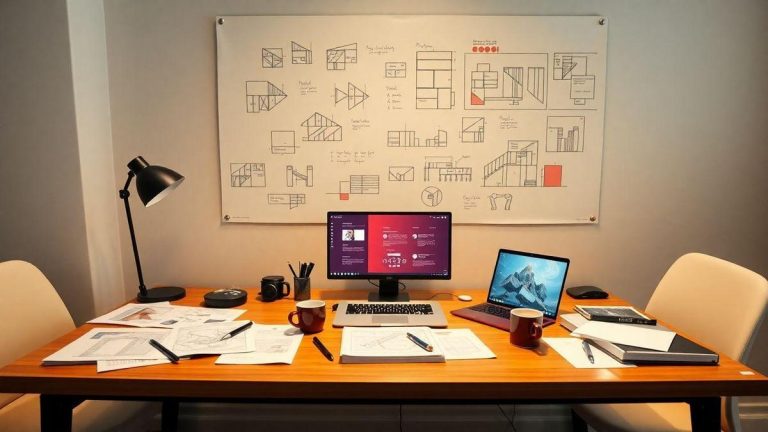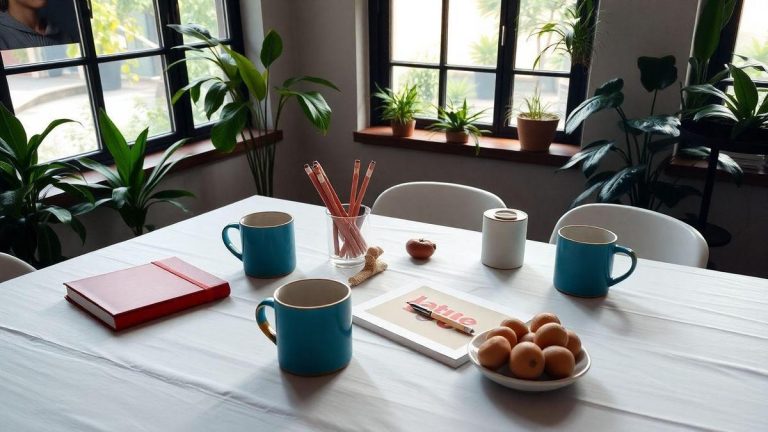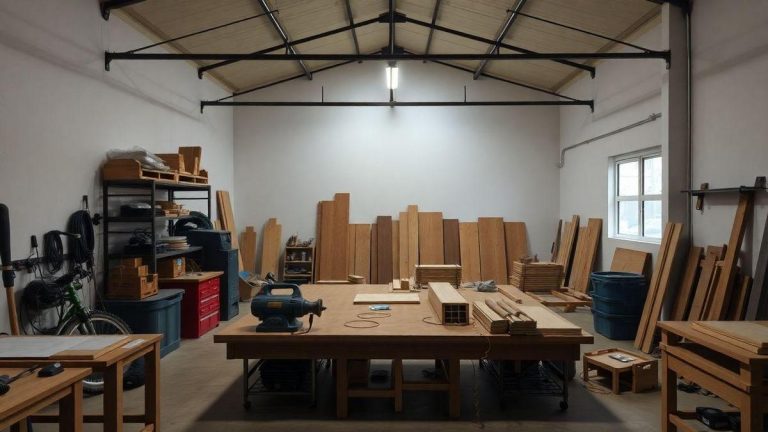When Your Personal Projects Become a Real Portfolio
When Your Personal Projects Become a Real Portfolio, I realized that the journey of creating, failing, and learning could be as much fun as trying to teach my dog not to steal food from the table. Here, I'll share my mishaps and triumphs in personal projects, as well as how they turned me into a true teacher of the portfolio! Get ready for some good laughs and hot tips that will make your resume shine brighter than the Death Star!
The Magic of Personal Projects
How my projects transformed me
Ah, personal projects! They're like that friend who always brings pizza to the party: you never know what to expect, but you know it's going to be good. When I first started programming, I had more doubts than a cat in a bath. Over time, every project I tackled became a learning opportunity. I wasn't just writing code; I was shaping my identity as a programmer.
Let me tell you: I did a project on a recipe website. Yes, you read that right! My passion for food and programming merged. With each line of code, I felt more confident. And, believe me, there's nothing more rewarding than seeing a website you created work. It's like watching your child take their first steps, only without diapers!
Personal projects: the recipe for success
Now, if you're wondering how I managed to turn these projects into success, here's the magic recipe:
- Choose a theme you love: If you don't like gardening, don't do a project about plants. Unless you want to torture yourself.
- Set small goals: Start with something simple. A website? An app? A blog? It doesn't have to be the next Facebook.
- Ask for feedback: Show it to friends, family, or even your dog. They might be able to give you valuable tips.
- Perfect: Don't be afraid to go back and fix it. What was once a bug can turn into a new feature!
Here's a table of the types of projects I've done and what I learned from each:
| Project | What I learned |
|---|---|
| Recipe website | How to use HTML and CSS |
| To-do list app | The importance of a good UX |
| Technology blog | How to engage readers |
What I learned from each project
Each project was like a mad professor that taught me valuable lessons. For example, on my recipe website, I learned the importance of a good interface. After all, no one wants to see a website that looks like it was made in 1995. In the to-do list app, I noticed that the user experience That's all. If someone doesn't understand how to use it, you can be sure they'll give up faster than I give up going to the gym!
With each project, I not only improved my technical skills, but I also learned to work as a team and the communicate ideas. And this is essential, because, believe me, you will need help at some point.
Building a Professional Portfolio
Step by step to an amazing portfolio
When I started my programming journey, I had a brilliant idea: "I'm going to create a portfolio that will blow everyone away!" Spoiler: it didn't quite work out that way. But after some trial and error, I finally discovered some steps that actually work. Here's my guide to help you avoid making the same mistakes I did.
- Choose a platform: There are several options, such as GitHub, Behance, or even a personal website. The important thing is to choose one that you feel comfortable with.
- Show your projects: Don't be afraid to post your projects there. If you've built a cool website or an app that works (even if it's not perfect), put it in your portfolio. Highlight what you learned with each project.
- Describe your skills: Don't be shy! Write about your skills and what you can do. If you know how to code in Python, HTML, CSS, or even make coffee (just kidding!), include it all.
- Stay updated: Whenever you finish a new project, add it to your portfolio! This way, it will grow along with your skills.
- Ask for feedback: Show your portfolio to friends or colleagues. What did they think? Did they understand what you did? This can help you improve even further.
Mistakes I made and how to avoid them
Oh, the mistakes… I've made so many! Here are a few you can avoid:
| Error | How to avoid |
|---|---|
| Not having an online portfolio | Create a website or use an existing platform. |
| Place old projects | Always update with the latest projects. |
| Do not describe projects | Talk about what you did and learned. |
| Ignore design | A beautiful portfolio attracts more attention. |
In one of these attempts, I uploaded a project I made in my first month of programming. What I didn't realize was that it was messier than my room after a party. I learned that less is more. Focus on quality, not quantity!
The impact of a good portfolio on your career
A well-crafted portfolio can be your ticket to incredible opportunities. When I started receiving job offers, I realized that many employers looked at my portfolio before calling me for an interview. A good portfolio shows who you are and what you can do. It's like a business card, but much cooler!
Project Skills Development
Skills I developed without realizing it
Ah, the life of a programming student! It's like being at an amusement park, but instead of roller coasters, I have codes and bugsAnd believe me, I've developed several skills without even realizing it! Here are some of them:
- Resilience: I tried to solve a bug for hours and when I finally did it, I felt like I had defeated a dragon!
- Creativity: Sometimes the solution to a problem is so outside the box that I wonder if I'm programming or making modern art.
- Organization: I learned to keep my code organized, because messy code is like a room full of dirty clothes – no one wants to go in!
Projects that made me a better programmer
Now, let's talk about the projects that truly transformed me. Each one was an adventure! Here are a few that sharpened my mind like a chef's knife:
| Project | What I learned |
|---|---|
| Create a personal website | HTML and CSS have become my best friends. |
| Develop a simple game | Programming logic and patience were tested. |
| Automate daily tasks | I learned Python and how to save time (and sanity). |
These projects not only improved my skills, but also made my portfolio more beautiful than a Van Gogh painting!
The secret to learning while having fun
Now, here's the trick: have fun while learning! I always look for ways to make learning easier. Sometimes, I put on some upbeat music and dance while I code. Other times, I compete with friends to see who can solve a problem the fastest. The truth is, when you have fun, you learn much faster. And who said coding can't be fun?
Project Presentation: The Show Begins!
How I learned to shine in presentations
Ah, the performances! For me, it's always been like a magic show: the audience expects something amazing, and I just hope I don't do a trick that involves running off the stage! Over time, I've learned that shine in presentations it's more about preparation than about having an expensive suit or a PowerPoint full of special effects.
I remember my first presentation. I was so nervous I felt like I'd swallowed a porcupine! But with a few tips and tricks, I was able to turn my nervousness into positive energy. The key? Practice, practice and practiceAnd, of course, have a good dose of humor! This always helps break the ice.
Tips to make your presentation irresistible
Here are some tips I've learned along the way. Get ready to take notes, because this will change your life (or at least your next presentation)!
- Know your audience: This helps you tailor your message. If you're talking to programmers, use jargon. If you're talking to laypeople, avoid words that sound like a Harry Potter spell!
- Use images: A picture is worth a thousand words. And if that picture is of a cat doing something funny, even better!
- Tell a story: People love to hear stories. And if you can make your story involve a funny mistake you made, you'll win over the audience!
- Keep the time: Don't go on too long. If your presentation is longer than a Titanic movie, you'll lose everyone's attention.
- Rehearse with friends: They'll give you feedback and, if you're really lucky, a few laughs.
Here's a simple table for you to visualize:
| Tip | Description |
|---|---|
| Know your audience | Adapt your message to your target audience |
| Use images | Fun images help communicate |
| Tell a story | Personal stories connect with the audience |
| Keep the time | Respect time so as not to get bored |
| Rehearse with friends | Feedback and fun guaranteed |
The art of storytelling with my projects
Storytelling is like making a cake: you need the right ingredients and, of course, the ability to not burn everything! I always try to include a dash of humor and a touch of emotion. When I share my projects, I like to start with the why—why did I do it? What inspired me?
For example, I once created an app that helped organize tasks. Instead of just showing the interface, I started by telling about the time I missed a deadline because I was distracted by cat videos. The audience laughed, and suddenly everyone was more interested in the app.
In the end, remember: When Your Personal Projects Become a Real Portfolio, storytelling is the key to making your ideas stand out!
Portfolio Tips That Work
What should I include in my portfolio?
When I started building my portfolio, I thought I needed to include everything I've ever done. But guess what? That's a trap! What really matters are the jobs that showcase your skillsHere are some tips on what to include:
- Personal Projects: Those you made on your own, which show your creativity and skills.
- Freelance Work: If you've done something for someone, include it in your portfolio. This shows that you've worked with clients.
- Real Experiences: Relevant previous internships or jobs. It's not worth listing experience selling churros unless you've created a website for it.
- Technical Skills: List the tools and languages you're proficient in. If you know how to program in Python and make coffee, don't hesitate to include them!
How I chose my best works
Choosing the best works was like choosing my favorite ice cream flavor. I simply couldn't! But in the end, I made a list and followed a few rules:
- Relevance: I chose projects that connect with what I want to do in the future. If you want to work in design, show us your best designs!
- Impact: I thought about which projects had a positive impact. A website that increased a client's sales by 50%? That deserves a shout-out!
- Diversity: I tried to include different types of work. This shows that I'm versatile and not just a one-note programmer.
| Criterion | What to consider |
|---|---|
| Relevance | Projects that align with your goals |
| Impact | Results that your projects brought |
| Diversity | Variety of skills and styles |
What not to do in my portfolio
Now, let's talk about what no to do. This is just as important as what to include! Here are some pitfalls I avoided:
- Exaggerate: Don't post work you didn't do. That's like putting ketchup on a gourmet dish. No one will believe it!
- Outdated: Keep your portfolio fresh. A project from 10 years ago may no longer be impressive.
- Lack of Context: Don't forget to explain your projects. People need to understand what you did and why it's cool.
Personal Marketing and Branding
The importance of selling well
Ah, personal marketing! If you think this is only for big celebrities or those with an Instagram full of beach photos, you're very wrong! Selling yourself well is like making good coffee: it takes a little practice, but the results are worth it. When I started programming, I thought technical skills alone would get me a good job. Spoiler: I was wrong!
If you don't know how to showcase what you do, it's like having a superpower and not using it. The truth is, people need to know who you are and what you can do. After all, no one will guess you're the next programming genius just because you know how to make a website in HTML. So, start selling yourself, even if you don't have an aquarium!
How I created my personal brand
Creating my personal brand was like baking a chocolate cake: a bit of a recipe, a bit of improvisation, and, of course, a dash of humor! I started by thinking about what made me different. What did I have to offer that no one else did?
Here are some tips that have worked for me:
- Be yourself: Don't try to be someone you're not. It will only make you tired, and nobody likes a sugar-free cake!
- Use social media: I started sharing my projects and experiences. This helped showcase my work and connect me with others in the field.
- Networking: Meeting people is essential. Attend events, make friends, and exchange ideas. Sometimes the best code comes from a relaxed conversation!
The impact of personal marketing on the portfolio
Now, let's talk about your portfolio. Ah, your portfolio! It's your calling card. Even if it's not good, you could have the best skills in the world and no one will notice. Personal marketing is what brings your portfolio to life.
Here's a simple table that shows how personal marketing can impact your portfolio:
| Aspect | No Personal Marketing | With Personal Marketing |
|---|---|---|
| Visibility | Low | High |
| Connections | Limited | Wide |
| Opportunities | Rare | Frequently asked questions |
| Recognition | Almost none | High |
With good personal marketing, your portfolio is not just a collection of projects, but a showcase of your talent and personality. When Your Personal Projects Become a Real Portfolio, you stand out from the crowd!







